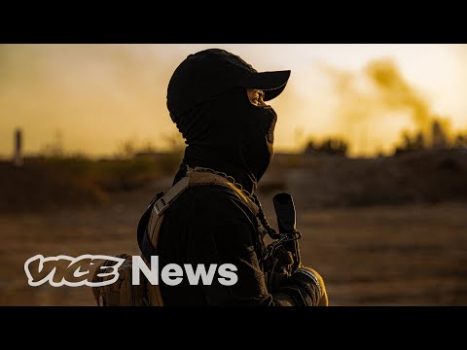Inside the US-Iran Shadow War for Control of the Middle East

Back in March we sent a crew, including VICE Founder Suroosh Alvi, to Iran.
We wanted to do a story about a rash of assassinations of Iranian nuclear scientists – most recently Mohsen Fakhrizadeh, head of the country’s nuclear program. We ended up getting unprecedented access, from Tehran to Baghdad, into the sprawling shadow war between the US and #Iran for the heart of the #MiddleEast.
What fronts has the shadow war been fought on, and what tactics have the US and Iran employed?
Inside the US-Iran Shadow War for Control of the Middle East
The Middle East has long been a region of strategic importance for global powers, and the United States and Iran have been engaged in a shadow war to control the area’s political and economic direction for many years. This ongoing conflict has seen both countries engage in covert operations, proxy battles, and political maneuvering, with significant implications for the region and the wider world.
At its core, the US-Iran shadow war is motivated by two key factors: regional power dynamics and ideological differences. Iran is a major regional power in the Middle East, with significant economic, political, and military clout, while the United States is a global superpower that has long sought to exert influence in the region. Moreover, the two countries have a long history of ideological differences, with Iran’s Islamic Republic representing a challenge to America’s liberal-democratic values.
The shadow war between the two countries has been fought on multiple fronts, including covert operations, cyberattacks, and proxy battles. Covert operations have taken place throughout the region and beyond, with the United States and Iran both seeking to undermine each other’s interests through sabotage, espionage, and assassination attempts. Cyberattacks have similarly become a key battleground, with both sides using digital means to disrupt the other’s systems and steal valuable data.
However, perhaps the most significant aspect of the shadow war has been the use of proxies. Both the United States and Iran have sought to cultivate relationships with local actors and groups to advance their interests in the Middle East. Iran has famously supported groups like Hezbollah and Shia militias in Iraq, while the United States has backed a variety of actors, including the Gulf states, Israel, and Kurdish groups in Syria.
Despite the shadow war’s complexity and intensity, it is important to note that it is not a conventional military conflict. Rather, it is a form of low-intensity warfare that relies on covert operations, political maneuvering, and proxy battles rather than direct military action. Nonetheless, the impact of the shadow war has been significant, with the ongoing tensions contributing to regional instability and exacerbating existing conflicts.
At present, the US-Iran shadow war shows no signs of coming to an end. With both sides deeply entrenched in the conflict and little sign of a diplomatic breakthrough, it seems likely that the struggle for control of the Middle East will continue for the foreseeable future. However, it is important to recognize that the shadow war is not a zero-sum game; the interests of the United States and Iran are not mutually exclusive, and finding a way to deescalate the conflict and work toward a more stable and prosperous Middle East should be a shared goal.









Robot spy gorilla infiltrates a wild gorilla troop ????️???? | Spy In The Wild
Former judge Leticia Astacio sentenced to 180 days in jail
Snowmobile Camper with Off Grid Heater- Surviving the Night in -18C / 0F Temperature!
Inside The US Government’s Top-Secret Bioweapons Lab
LIFE of a BILLIONAIRE’S SON